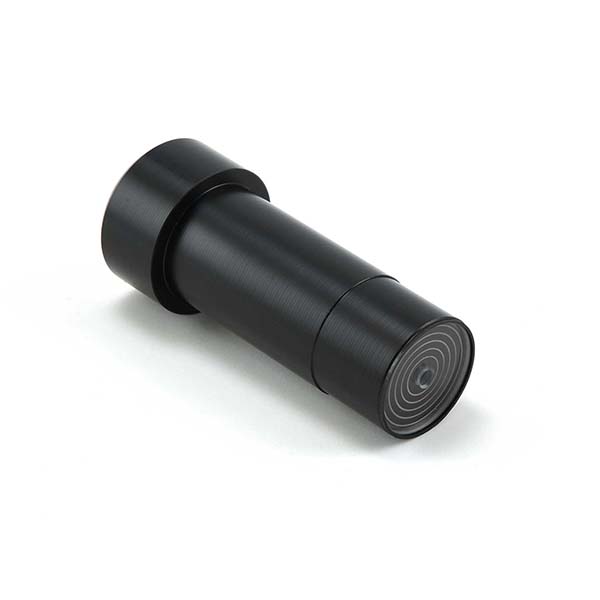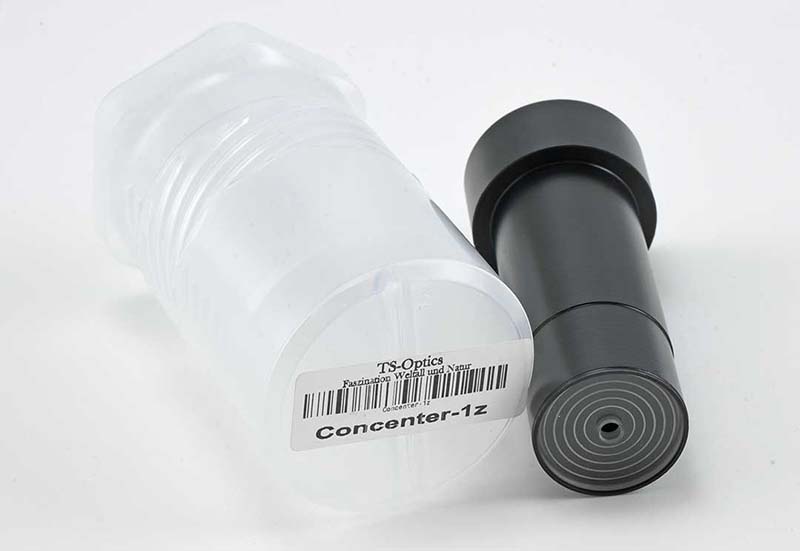With the TS 1.25″ CONCENTER – you cannot adjust a Newtonian more easily
The alternative to all collimation tools on the market! Now the centre of the secondary is being taken into account (without a mark in the centre). The adjustment is being done with the fully illuminated focuser. Even the Newtonian offset is considered. Now even beginners achieve a perfect collimation of their Newtonian telescope – even for astrophotography.
The Concenter eyepiece consists of a closed cylinder, similar to a Cheshire eyepiece. The crucial difference is the inserted disk.
You don´t need a centre mark on the secondary mirror for collimation. The collimation is made directly via the edge of the mirror so that an exact congruence of the optical light area is met, even regarding the offset. Now you collimate significantly more precisely than with a laser, above all you can be sure that not only the axis, but also the field is optimally adjusted.
How to collimate your Newtonian with the Concenter collimation eyepiece:
If you hold the adjustment eyepiece in your hand, you will notice a transparent plastic disc with a central bore and concentric engraved circles inset on the telescope side at the lower end. At the other end you will find a central hole, which is chosen so small that the eye has no opportunity to avoid centring when looking through. After inserting the collimation eyepiece into the focuser you will see faint translucent rings in front of the optical components of the telescope.
Collimation of the secondary mirror to the focuser for optimum illumination
This step is made with covered primary mirror. Pay attention to a good illuimination when using the Concenter eyepiece. Now the secondary mirror, a rectangular mounting of the focuser supposed, is adjusted so that it appears between the circles of the collimation cicles and without offset. With the focus control of the focuser you can bring the outer edge of the secondary mirror and the matching circle to cover. Even small deviations from the ideal position are recognised immediately. By doing this, you place the secondary mirror in the optimal position to the focuser to millimetre accuracy. This step is necessary only once, you can remove the cover of the primary mirror afterwards.
Alignment of the secondary mirror to the main mirror
While looking into the eyepiece, the tilting is changed by means of the screws of the secondary mirror until the bright reflection of the primary mirror in the secondary mirror is concentric with the circles.
Alignment of the primary mirror to the optical axis
Shift the centre mark of the primary mirror exactly in the centre of the concentric circles by using the adjustment screws of the primary mirror cell. You will notice even the slightest deviation. After this, your Newtonian telescope will be perfectly collimated.


Reviews
There are no reviews yet.